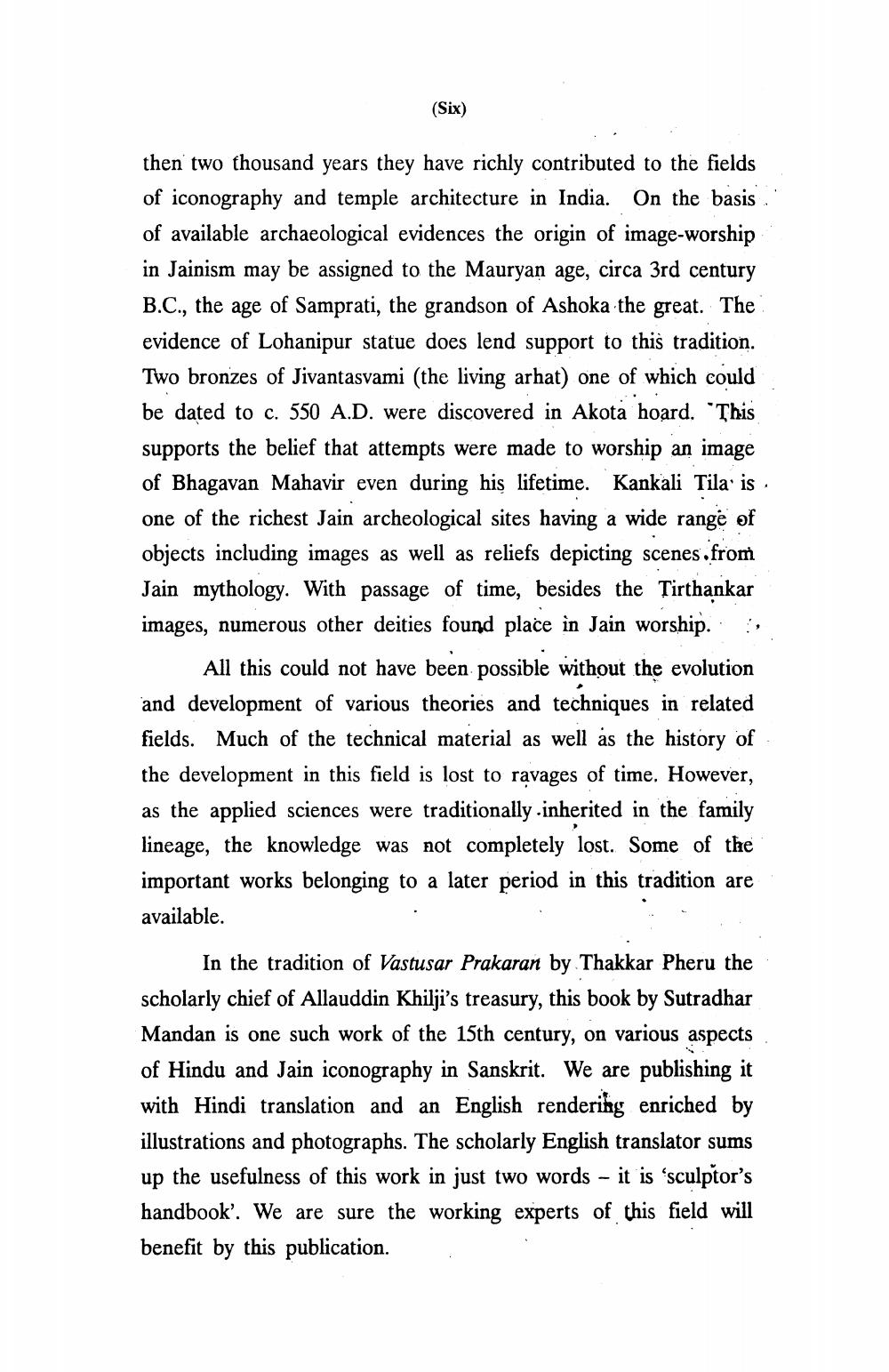________________
(Six)
then two thousand years they have richly contributed to the fields of iconography and temple architecture in India. On the basis of available archaeological evidences the origin of image-worship in Jainism may be assigned to the Mauryan age, circa 3rd century B.C., the age of Samprati, the grandson of Ashoka the great. The evidence of Lohanipur statue does lend support to this tradition. Two bronzes of Jivantasvami (the living arhat) one of which could be dated to c. 550 A.D. were discovered in Akota hoard. "This supports the belief that attempts were made to worship an image of Bhagavan Mahavir even during his lifetime. Kankali Tila: is. one of the richest Jain archeological sites having a wide range of objects including images as well as reliefs depicting scenes from Jain mythology. With passage of time, besides the Tirthankar images, numerous other deities found place in Jain worship. : ,
All this could not have been possible without the evolution and development of various theories and techniques in related fields. Much of the technical material as well as the history of the development in this field is lost to ravages of time. However, as the applied sciences were traditionally.inherited in the family lineage, the knowledge was not completely lost. Some of the important works belonging to a later period in this tradition are available.
In the tradition of Vastusar Prakaran by Thakkar Pheru the scholarly chief of Allauddin Khilji's treasury, this book by Sutradhar Mandan is one such work of the 15th century, on various aspects of Hindu and Jain iconography in Sanskrit. We are publishing it with Hindi translation and an English rendering enriched by illustrations and photographs. The scholarly English translator sums up the usefulness of this work in just two words - it is ‘sculptor's handbook'. We are sure the working experts of this field will benefit by this publication.




